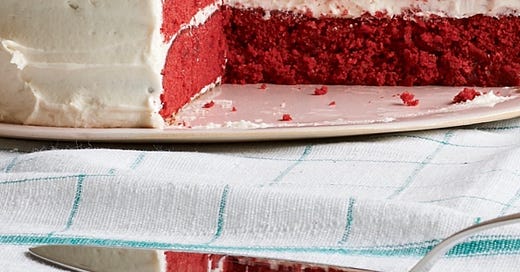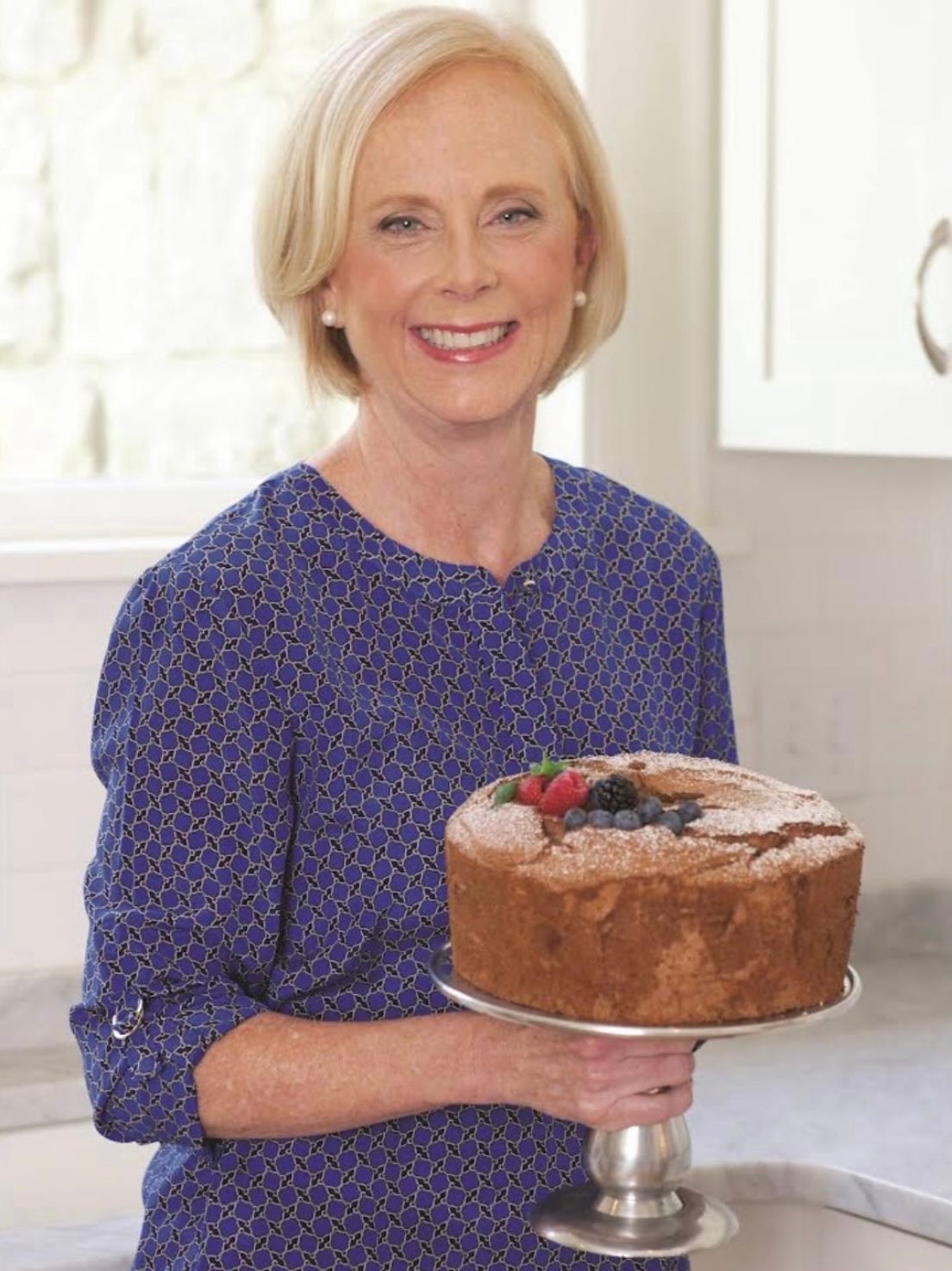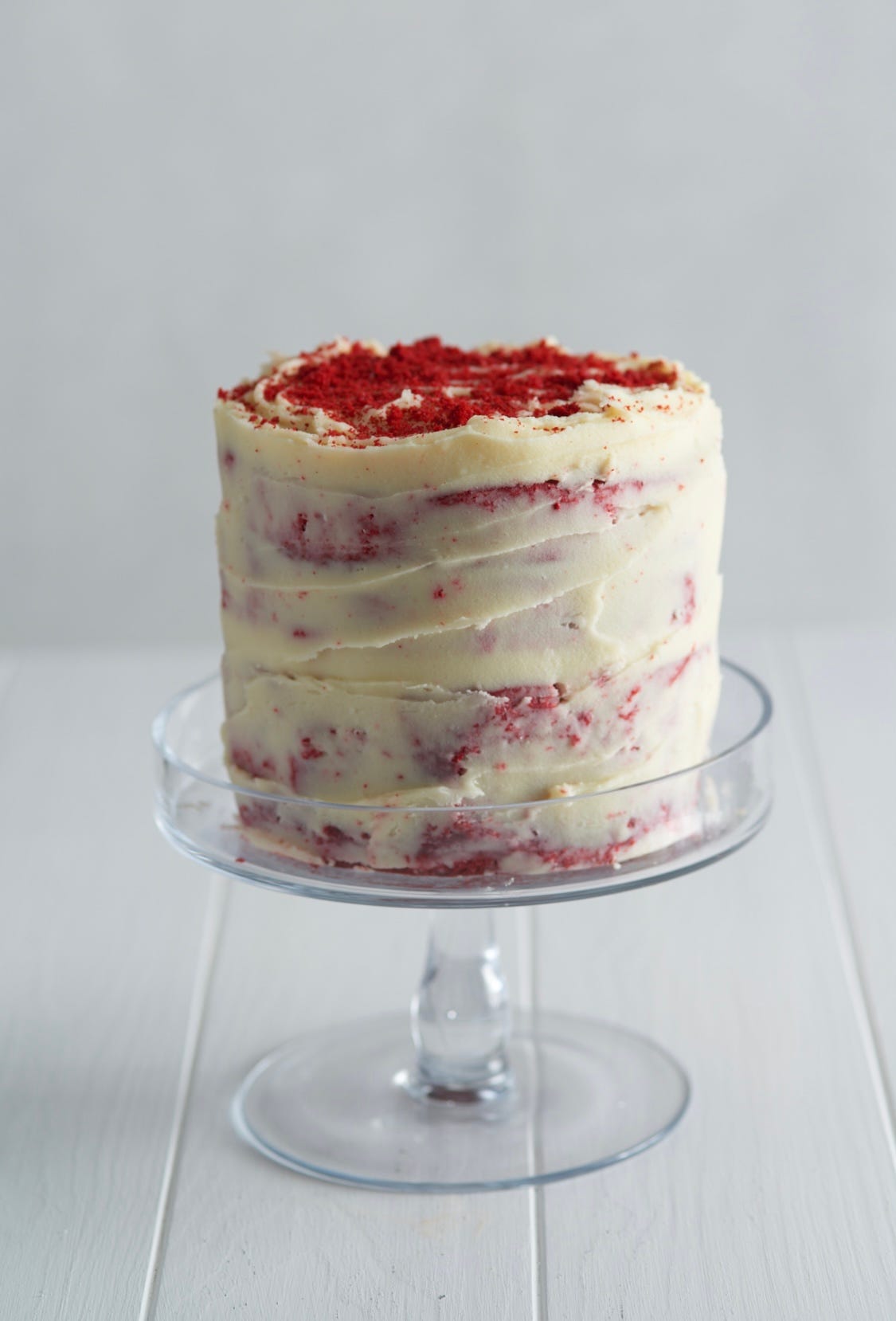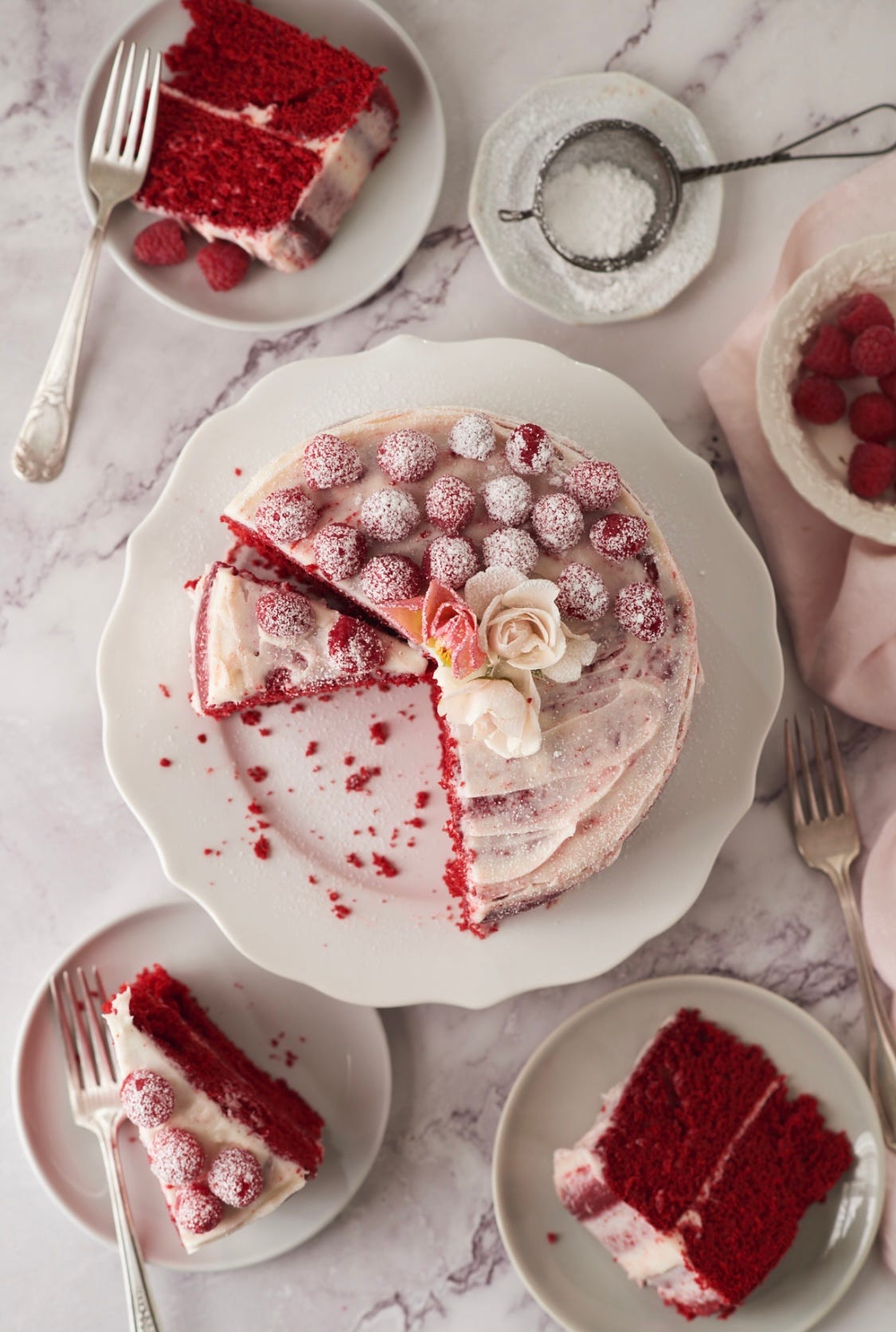This week I’ve invited celebrated cookbook author and fellow Substack food writer, Anne Byrn to share her Red Velvet Cake with us just in time for Valentine’s Day. I’m over on Anne’s Newsletter Anne Byrn: Between the Layers today with her Pink Champagne Cake from American Cake. It’s another great cake choice for Valentine’s Day. If you’d like to learn more about Anne’s newsletter, here’s how:
Red Velvet Cake: From the Victorians to Steel Magnolias, this cake gets everyone’s attention
by Anne Byrn
Throughout American cake history, cooks have figured out how to dye their cakes red. Why red and not green or blue may be a question for psychologists, as it seems there has been an American obsession with red cake.
It started in 1839 when the Kentucky Housewife cookbook suggested using the juice of ripe cherries and strawberries to tint the cake. By the end of the century the Victorians were coloring watermelon cake using cochineal, which is crushed, dried tropical beetle. That gave way to red food coloring, the coloring of choice in Red Velvet, although cooks are forever experimenting with more natural ways - such as beets - to make cake see red.
Never has an American cake caused such a stir than with the Red Velvet layer cake. From the name, to the ingredients to the place and time in which the first Red Velvet Cake surfaced in America, historians and cooks can’t seem to agree.
It is from Texas. No, it’s from Indiana. It should have cream cheese frosting. No, only the cooked Ermine frosting. And of course, the glamorous story that the Red Velvet started at the Waldorf-Astoria Hotel in New York in the 1930’s has fueled the fire.
A national star through the Depression Years
What is known about this American favorite, a cake that’s baked for Valentine’s, Christmas, Juneteenth, the Fourth of July, and countless birthdays and potlucks, can be found in the pages of old cookbooks, newspapers and magazines. They reveal that the cake dates to the 1920’s.
Cora Scott shared a recipe for a “Velvet Cake” in the Fort Scott, Kansas, newspaper in June, 1921, and it called for a tablespoon of red food coloring, but no cocoa. Back then,“velvet” was a common adjective for cakes, implying they contained cornstarch or rice flour to soften the hard wheat flour and thus had a finer texture.
And the “red” color was originally a chemical reaction between an acid (cocoa, buttermilk) and an alkali (baking soda) that created a naturally reddish batter. Hershey’s shared a Demon Cake with such a color in 1934, and who needed cocoa when artificial food color could supply it. So Red Velvet became the lifesaver of the Depression baking years.
A movie revives Red Velvet’s popularity
Throughout the 1950’s and 60’s, Red Velvet cakes were baked in communities across America. One such cake won the Maryland State Fair in 1960. And Texas had always had a strong connection to the cake due to the Austin-based Adams Extract Company claiming it provided homemakers with the first recipe to use with its red food coloring sold door to door.
But Red Velvet would go viral again when the 1989 movie Steel Magnolias, in which the groom’s cake is an armadillo-shaped Red Velvet, had everyone clamoring to bake that cake at home.
Robert Harling, who wrote the play Steel Magnolias, which was made into the movie, told Garden & Gun magazine in 2012 that he was credited “with the rediscovery and revival of Red Velvet cake. I consider this as one of my great life achievements.”
To be truthful, I’ve never been a Red Velvet fanatic. The heavy hand of red food coloring in this cake is something that has always turned me off about it. I love the look and the taste, but the entire bottle, really?
But after testing dozens of red velvet cakes to create the perfect recipe for my book, American Cake, I now know it does take the entire bottle to make the cake really red.
The late John Egerton summed it up best when he said, “To me there seems no culinary reason why someone would dump that much food coloring into a cake.”
Unless they were trying to sell you food coloring. Or that’s the way your mama made Red Velvet!
Red Velvet Cake
Here is the recipe I adapted from the Adams Extract Company and The New York Times. I also make Red Velvet Cake with a cake mix in my book, A New Take on Cake. The ingredients are pretty straightforward, and baking this cake is a lot like baking any other cake from scratch. You need butter and eggs at room temperature. And the old-fashioned combo of buttermilk-vinegar-baking soda is a nostalgic part of the recipe. You could always forego the food coloring and let the natural chemical reaction of the acidic and base ingredients take place, but then, you might be disappointed when it’s not bright red! This is frosted with the classic Ermine (cooked) frosting. If you prefer cream cheese frosting on your red velvet, by all means, use it!
Makes: 12 Servings
Prep: 60 to 90 minutes
Bake: 16 to 18 minutes
Cake
Butter or vegetable shortening and unsweetened cocoa or flour for prepping the pans
1/2 cup unsalted butter or shortening at room temperature
1 1/2 cups granulated sugar
2 large eggs at room temperature
2 teaspoons vanilla extract
2 tablespoons red food coloring
2 1/2 cups all-purpose flour, sifted
3 tablespoons unsweetened cocoa
1/2 teaspoon salt
1 cup buttermilk at room temperature
1 tablespoon white vinegar
1 teaspoon baking soda
Ermine Frosting
5 tablespoons all-purpose flour
1 cup cold whole milk
1 teaspoon vanilla extract
Pinch of salt
1 cup (two sticks) unsalted butter at room temperature
1 cup granulated sugar
1. Place a rack in the center of the oven, and pre-heat the oven to 350 degrees F. Grease three 9-inch round cake pans and dust them with cocoa or flour. Shake out the excess cocoa or flour, and set the pans aside. 2. Place the butter and the sugar in a large mixing bowl and beat with an electric mixer on medium speed till light and creamy, 3 minutes. Add the eggs, one at a time, beating well after each addition. Blend in the vanilla and red food coloring. Set aside. 3. In a separate bowl, stir together the flour, cocoa, and salt. In a small bowl, stir together the buttermilk, vinegar and baking soda. Add the dry ingredients and the buttermilk mixture to the batter alternately at low speed, beginning and ending with the dry ingredients. Scrape down the bowl, and stir to blend the batter one last time. Divide the batter between the pans, and place the pans in the oven. 4. Bake the cakes until they just begin to pull away from the sides of the pan, about 16-18 minutes. Remove the pans from the oven, and place them on a rack to cool 10 minutes. Run a knife around the edge of the pans, give them a gentle shake to loosen the cake, then turn the layers out once and then again onto the rack so they cool completely right-side up. 5. While the cakes cool make the Ermine Icing. Whisk together the flour and milk in a small saucepan over medium heat until it is very thick and pudding-like, 4-5 minutes. Remove the pan from the heat and whisk in the vanilla and salt. Pour the mixture into a small, heat-proof bowl. Cover the surface of the mixture with plastic wrap and place in the refrigerator for 1 hour to cool. 6. Place the butter and sugar in a large mixing bowl and beat with an electric mixer on medium speed till light and fluffy, 4 minutes. Remove the milk and flour mixture from the refrigerator and slowly add it to the butter and the sugar while beating on medium. Continue to beat until the mixture is light and fluffy and resembles whipped cream, about 2 minutes. 7. To assemble the cake, place one layer on a cake plate. Spread about 3/4 cup of the frosting evenly to the edges. Place a second layer on top and repeat. Place the third layer on top, and spread a thin layer of frosting on the sides and on top, making what is called a skim coat. Place the cake in the refrigerator to chill 15 minutes. This seals the crumbs. 8. Remove the cake from the refrigerator, and with the remaining frosting, generously frost the top and sides of the cake. Slice and serve.
Anne Byrn is the New York Times bestselling author of American Cake, A New Take on Cake, The Cake Mix Doctor, and Skillet Love. She was food editor of The Atlanta Journal-Constitution and a graduate of La Varenne École de Cuisine in Paris, and she lives with her family in Nashville.
You can find Anne on social media on Twitter and Instagram.
Thank you, Anne! You’re welcome back in my kitchen anytime! Jolene









I so enjoyed learning the history of this cake and it’s trademark red coloring. I think I did once try to make it, but was disappointed in the resulting dull reddish-brown hue. Obviously I didn’t use near enough red food coloring! I’m tempted to try again with this recipe! Thanks for this excellent guest post from Anne Byre!
Enjoyed this fascinating history of a classic American cake. Cochineal is also the ingredient in Alchermes, an Italian liqueur often brushed on cakes and pastries to tint them red.